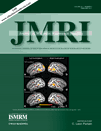Fast spin-echo triple echo dixon: Initial clinical experience with a novel pulse sequence for simultaneous fat-suppressed and nonfat-suppressed T2-weighted spine magnetic resonance imaging
Abstract
Purpose
To evaluate a prototype fast spin-echo (FSE) triple-echo Dixon (FTED) technique for T2-weighted spine imaging with and without fat suppression compared to conventional T2-weighted fast recovery (FR) FSE and short-tau inversion recovery (STIR) imaging.
Materials and Methods
Sixty-one patients were referred for spine magnetic resonance imaging (MRI) including sagittal FTED (time 2:26), STIR (time 2:42), and T2 FRFSE (time 2:55). Two observers compared STIR and FTED water images and T2 FRFSE and FTED T2 images for overall image quality, fat suppression, anatomic sharpness, motion, cerebrospinal fluid (CSF) flow artifact, susceptibility, and disease depiction.
Results
On FTED images water and fat separation was perfect in 58 (.95) patients. Compared to STIR, the FTED water images demonstrated less motion in 57 (.93) of 61 patients (P < 0.05), better anatomic sharpness in 51 (.84) and patients (P < 0.05), and less CSF flow artifact in 7 (.11) P < 0.05) patients. There was no difference in fat suppression or chemical shift artifact. T2 FRFSE and FTED T2 images showed equivalent motion, CSF flow, and chemical shift artifact. Lesion depiction was equivalent on FTED water and STIR images and FTED T2 and T2 FRFSE images.
Conclusion
FTED efficiently provides both fat-suppressed and nonfat-suppressed T2-weighted spine images with excellent image quality, equal disease depiction, and 56% reduction in scan time compared to conventional STIR and T2 FRFSE. J. Magn. Reson. Imaging 2011;33:390–400. © 2011 Wiley-Liss, Inc.




